
Ostrava Gallery PLATO opens in the newly renovated building of the former slaughterhouse
It is moving just across the street, but the shift is dramatic. After six years of temporary locations, the PLATO contemporary art gallery is gaining facilities comparable to European standards. The listed building of the former slaughterhouse becomes the third headquarters of the municipal organization since its founding, following a former textile shop and a former DIY store. PLATO begins its activities there on September 21, 2022, with the international exhibition Optimized Fables about a Good Life, through which it responds to the original function of the building.
The dilapidated building was purchased by the city for its contributing organization in 2016 along with the neighboring DIY store. "What initially seemed like a burden, namely the abandoned Bauhaus, quickly turned out to be an advantage. Thanks to the openness, accessibility, and trust of Mayor Tomáš Macura in our concept, we gained five thousand square meters for experimentation and, concurrently, the prospect of operating at the level of a Swiss kunsthalle," comments PLATO director Marek Pokorný. The reconstruction, which was commissioned and funded by the city of Ostrava, took a record-breaking seven years from the first plan in the form of a one-page concept to the construction approval.
PLATO will launch its operation in the new venue with the group exhibition Optimized Fables about a Good Life, which will run until January 1, 2023, occupying all five exhibition halls. The curators are Daniela and Linda Dostálkovy and Marek Pokorný. The exhibition, based on the genre of fables, addresses how to lead a good life and symbolically marks the beginning of a new phase of the gallery's operation. Animals will play a central role in the exhibition, helping the institution recode the original function of the building – a slaughterhouse – process its story, and transform it. The animal as a subject will be one of the themes and an active element that PLATO will return to.
In addition to exhibitions, the gallery continues to offer a wide range of programs and events for various groups, with a special focus on schools and families, for whom a studio on the first floor of the building will serve educational programs. A new feature is a regular afternoon club for children during the workweek. It will be open six days a week, on Wednesdays until 8 PM. For those who have visited the institution, this will not represent a dramatic change in the program offer; PLATO will remain PLATO. The model for admission fees based on voluntary contributions remains in place and depends on the visitors' level of sympathy toward the institution. However, those who found the experimental space of the DIY store confusing will be able to navigate the new building more easily, as it offers a more comprehensible environment. The exhibition halls are also equipped with technologies that allow for the exhibition of works sensitive to display conditions requiring above-standard security.
PLATO continues to work with pressing topics and will continue to raise the smog flag. The interior of the new gallery building will also include a hydroponic farm for salads, which focuses on sustainability, ecology, and local production. Alongside reflecting on its carbon footprint in the world and considering small gestures that help change the world, visitors can also purchase fresh, locally grown organic salad.
The building, after reconstruction according to the design by the KWK Promes studio of Robert Konieczny, has two main entrances. In addition, its architectural solution allows for the rotation of six walls, making it accessible from all sides. "This concept suits us because we were concerned about permeability. It is essential for us that people can simply pass through the building. We do everything possible for people to shed their embarrassment about both the gallery and art. And for them to use the gallery and its surroundings as they wish," adds Dita Eibenová, program and project manager at PLATO. The openness of the institution and the building is complemented by a newly developed green space around it. The gallery collaborates with permaculture designer Denisa Tomášková on this project. The result will be a garden and park, with the foundation being planted in the autumn of 2022, which will gradually develop over the following years. "In addition to equipping the space with furniture, such as benches, we plan to plant shrubs with edible berries, fruit trees, and herbs. This will create an edible garden for people, insects, and animals," adds Eibenová. Before the actual planting, it was necessary to remove 60 tons of contaminated soil and replace it with new soil. Thanks to this, Ostrava is gaining a new public green space in the city center.
In addition to the new headquarters, PLATO will also continue to operate the former DIY store building, which is just across the street. However, the programming of this space will change. It will now become an experimental base for the activities of art schools (Faculty of Arts at the Ostrava University, Secondary Art School in Ostrava) and other partners, including communities. The library, bookstore, cinema, and garden will continue to operate unchanged, as will a bistro offering hot meals. The former slaughterhouse will carry the name PLATO, while the previous PLATO location will be called Bauhaus.
The dilapidated building was purchased by the city for its contributing organization in 2016 along with the neighboring DIY store. "What initially seemed like a burden, namely the abandoned Bauhaus, quickly turned out to be an advantage. Thanks to the openness, accessibility, and trust of Mayor Tomáš Macura in our concept, we gained five thousand square meters for experimentation and, concurrently, the prospect of operating at the level of a Swiss kunsthalle," comments PLATO director Marek Pokorný. The reconstruction, which was commissioned and funded by the city of Ostrava, took a record-breaking seven years from the first plan in the form of a one-page concept to the construction approval.
PLATO will launch its operation in the new venue with the group exhibition Optimized Fables about a Good Life, which will run until January 1, 2023, occupying all five exhibition halls. The curators are Daniela and Linda Dostálkovy and Marek Pokorný. The exhibition, based on the genre of fables, addresses how to lead a good life and symbolically marks the beginning of a new phase of the gallery's operation. Animals will play a central role in the exhibition, helping the institution recode the original function of the building – a slaughterhouse – process its story, and transform it. The animal as a subject will be one of the themes and an active element that PLATO will return to.
In addition to exhibitions, the gallery continues to offer a wide range of programs and events for various groups, with a special focus on schools and families, for whom a studio on the first floor of the building will serve educational programs. A new feature is a regular afternoon club for children during the workweek. It will be open six days a week, on Wednesdays until 8 PM. For those who have visited the institution, this will not represent a dramatic change in the program offer; PLATO will remain PLATO. The model for admission fees based on voluntary contributions remains in place and depends on the visitors' level of sympathy toward the institution. However, those who found the experimental space of the DIY store confusing will be able to navigate the new building more easily, as it offers a more comprehensible environment. The exhibition halls are also equipped with technologies that allow for the exhibition of works sensitive to display conditions requiring above-standard security.
PLATO continues to work with pressing topics and will continue to raise the smog flag. The interior of the new gallery building will also include a hydroponic farm for salads, which focuses on sustainability, ecology, and local production. Alongside reflecting on its carbon footprint in the world and considering small gestures that help change the world, visitors can also purchase fresh, locally grown organic salad.
The building, after reconstruction according to the design by the KWK Promes studio of Robert Konieczny, has two main entrances. In addition, its architectural solution allows for the rotation of six walls, making it accessible from all sides. "This concept suits us because we were concerned about permeability. It is essential for us that people can simply pass through the building. We do everything possible for people to shed their embarrassment about both the gallery and art. And for them to use the gallery and its surroundings as they wish," adds Dita Eibenová, program and project manager at PLATO. The openness of the institution and the building is complemented by a newly developed green space around it. The gallery collaborates with permaculture designer Denisa Tomášková on this project. The result will be a garden and park, with the foundation being planted in the autumn of 2022, which will gradually develop over the following years. "In addition to equipping the space with furniture, such as benches, we plan to plant shrubs with edible berries, fruit trees, and herbs. This will create an edible garden for people, insects, and animals," adds Eibenová. Before the actual planting, it was necessary to remove 60 tons of contaminated soil and replace it with new soil. Thanks to this, Ostrava is gaining a new public green space in the city center.
In addition to the new headquarters, PLATO will also continue to operate the former DIY store building, which is just across the street. However, the programming of this space will change. It will now become an experimental base for the activities of art schools (Faculty of Arts at the Ostrava University, Secondary Art School in Ostrava) and other partners, including communities. The library, bookstore, cinema, and garden will continue to operate unchanged, as will a bistro offering hot meals. The former slaughterhouse will carry the name PLATO, while the previous PLATO location will be called Bauhaus.
The English translation is powered by AI tool. Switch to Czech to view the original text source.
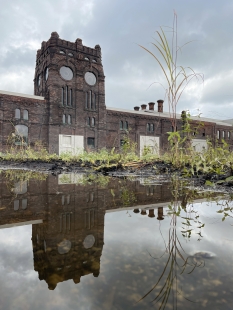
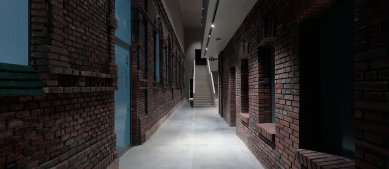
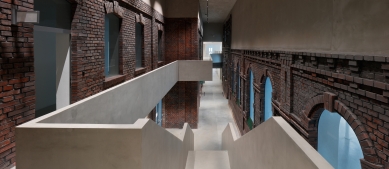
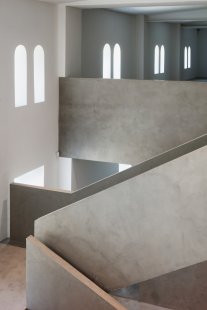

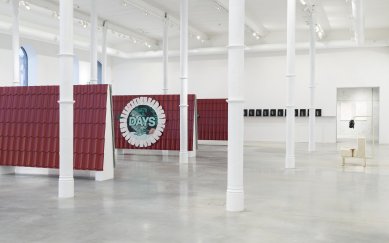
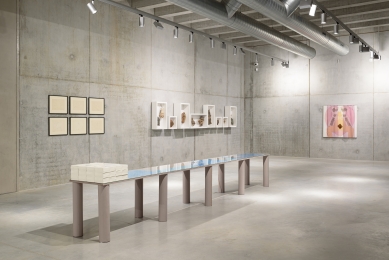
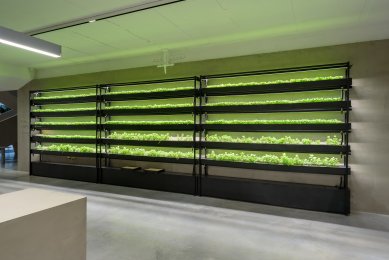
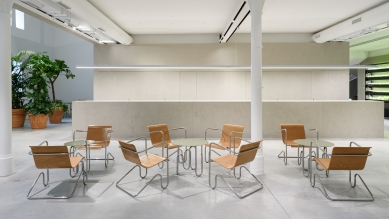
0 comments
add comment










